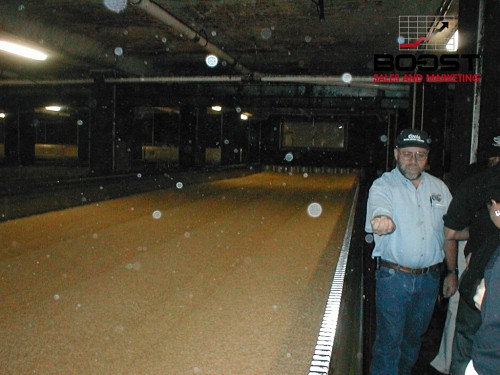 |
| Photo Courtesy: http://www.thelocal.se |
So basically people forgot how to cook from scratch. Beans come in a can, not your backyard garden. I remember certain 1960s comedy series characters like Lisa Douglas and Thurston Howell III who portrayed out of touch with reality rich people, who thought that food only came from cans. When the Gilligan's Island Professor explained to the Howell's that they had to cultivate and till soil to grow food, Thurston Howell was completely shocked and shouted, "How Vulgar! Yet today, many people really are that dense when it comes to cooking. They don't have even an elementary basic concept of the benefits of cooking from scratch. If for nothing else tastes and flavours. Beans are not that tough to prepare from scratch. I mean we are simply talking a good soaking over night and then sprouting. A big part of the problem with beans as a food in industrial countries is that it is considered a dirt poor peoples food. Indeed, during the depression years and war rationing times, such foods were a staples and still are in developing nations. But they shouldn't be restricted as a poor man's food in such a way. One of the problems is that beans in a can are known for giving the flatulence effect. The question is however, Why ?
| credit: Lead Action News These foods are known to be high in Phytates or Phytic Acids |
The after-effects from eating the baked beans is actually not the Bean's fault. The true 'Dirty Jobs' is done by the bacteria in your colon. There are a family of sugars called oligosaccharides and/or the Phytates (Phytic acids) which bind up phosphorus in the grain seeds, beans, peas and so forth and provide nourishment to a young plant while it is attempting to establish itself to provide for it's own. Non Ruminant animals like Cows etc can handle it better, although their digestion works harder converting this with their anti-oligosaccharide enzymes. The are mostly herbivores and need more of a grasses and other herbs diet as opposed to a richer grain diet given to them at feedlots. This is why there is a controversy with the excess methane hurting climate debates. Anyway, we don't have this enzyme and neither do other animals which are non-ruminants. Hence, these complex sugars pass through our stomachs and small intestines into the large intestine basically unmolested and with all their nutrition still locked up. It's this soaking, sprouting and fermenting of beans peas and grains which release and make the nutrients available to us. That's why in Health Food stores you will often see certain breads made from sprouted grains. So once inside your your large intestine, the numerous strains of bacteria chow down, divide generation after generation and in the process make millions of little bacteria micro-bubble farts which accumulate and turn into big people farts.

Of course for those who still are too lazy to cook beans from scratch and prefer the old fashioned store bought canned variety, there is still always the Ol' standby "Beano" to the rescue. Here is a real quick note on the soaking, sprouting and fermenting processes which are beneficial and more nutritional before actually cooking with beans.
Whole Grains & Beans - Soaking and Sprouting
 |
| Coors Brewery Tour |
"Dry barley grains are first cleaned,then soaked and transferred into a room where temperature and humidity are controlled. They will stay there for several days. When in optimum conditions, sprouting will occur and release enzymes that will convert the grain into malt. From there the grains are brushed to knock off the sprouted stems and then kiln dried and then to the roaster for differing lengths of time for the desired colour of the malt which gives certain beers and ales their colours."
 |
| Wikipedia: Western ScrubJay & Acorn |
Not only size matters: Acorn selection by the European jay (Garrulus glandarius)
Can Acorn Tannin Predict Scrub-Jay Caching Behavior?
Behavioral adaptation of Pallas's squirrels to germination schedule and tannins in acorns
~~~~~~~~~~~~~~~~~~~~~~~~~~~~~~~~~~~~~~~~~~~~
Remember this 'Olive Bath Soap' commercial with the Japanese boys in the Spa ?
Further Reading References:
http://en.wikipedia.org/wiki/Phytic_acid
Coors Brewery - The Largest Brewery in The United States
http://www.boostmyproduct.com/coors-brewery.html






